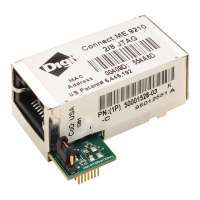Safety Statements
66
Safety Statements
To avoid contact with electrical current:
Never install electrical wiring during an electrical storm.
Never install an ethernet connection in wet locations unless that connector is specifically
designed for wet locations.
Use caution when installing or modifying ethernet lines.
Use a screwdriver and other tools with insulated handles.
You and those around you should wear safety glasses or goggles.
Do not place ethernet wiring or connections in any conduit, outlet or junction box containing
electrical wiring.
Installation of inside wire may bring you close to electrical wire, conduit, terminals and other
electrical facilities. Extreme caution must be used to avoid electrical shock from such
facilities. You must avoid contact with all such facilities.
Ethernet wiring must be at least 6 feet from bare power wiring or lightning rods and
associated wires, and at least 6 inches from other wire (antenna wires, doorbell wires, wires
from transformers to neon signs), steam or hot water pipes, and heating ducts.
Do not place an ethernet connection where it would allow a person to use an ethernet device
while in a bathtub, shower, swimming pool, or similar hazardous location.
Protectors and grounding wire placed by the service provider must not be connected to,
removed, or modified by the customer.
Do not touch un-insulated ethernet wiring if lightning is likely!
Do not touch or move any antennas while the unit is transmitting or receiving.
Do not hold any component containing a radio such that the antenna is very close to or
touching any exposed parts of the body, especially the face or eyes, while transmitting.
Do not operate a portable transmitter near unshielded blasting caps or in an explosive
environment unless it is a type especially qualified for such use
Any external communications wiring you may install needs to be constructed to all relevant
electrical codes. In the United States this is the National Electrical Code Article 800. Contact
a licensed electrician for details.

